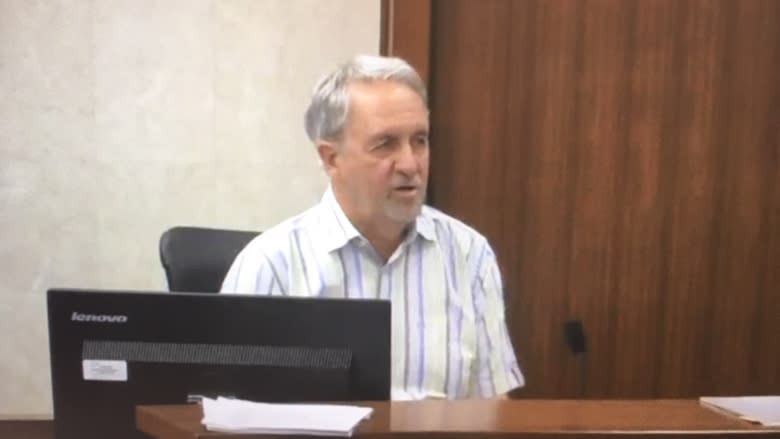Long-term care needs more funding and staff, former manager tells Wettlaufer inquiry
Patients would be better served if there was more funding for long-term care and if more staff could be hired to spend quality time with residents, the former administrator of a London, Ont. long-term care home told a public inquiry Friday.
A reliance on temp agencies to parachute in nurses to fill vacancies also leads to less-than-optimal care, according to a doctor who testified.
Robert Vanderheyden was the administrator at Meadow Park Long-Term Care while nurse Elizabeth Wettlaufer worked there and killed one patient.
Over her career from 2007 to 2016, she killed eight patients and tried to kill or harm six others.
"I struggle with the funding of long-term care," Vanderheyden said.
He said he left long-term care and now works in hospitals.
"When you go to long-term care, a lot of residents don't have a lot anymore. They don't have their home anymore," he said.
"Long term care is supposed to be like a home setting, but it's not the same thing."
Dining is a "big thing" for residents, Vanderheyden said. But when he worked at Meadow Park, from 2012 to 2014, the home spent just under $8 per resident per day on food.
"That means residents didn't like the food. It wasn't to the standard where it should have been," Vanderheyden said.
That amount has since increased to $9.53.
He was testifying at the public inquiry into long-term care which is looking at Ontario's system as a whole, trying to figure out how Wettlaufer was able to get away with her crimes for almost a decade and what changes can be made to prevent similar incidents.
Wettlaufer injected her victims with massive amounts of insulin to kill them, though she told police she would sometimes "experiment" by using different doses on different patients to see their effects.
As the administrator, Vanderheyden didn't really deal with Wettlaufer when she worked at the home. She came on his radar when she abruptly quit the same day a large amount of opioids went missing from the home.
Vanderheyden and others have said patients in long-term care homes are much sicker than they used to be and, as a result, they need more time with staff.
The inquiry also heard that sometimes Ontario's Ministry of Health and Long-Term Care would come in for inspections, but inspectors weren't allowed to share ideas for improving programs at other nursing homes.
Doctors also testify
Also testifying were two doctors whose patients were killed by Wettlaufer.
Dr. John McDonald was the physician at Telfer Place, a Paris, Ont. home where Wettlaufer was placed by a temp agency for nurses after she'd quit Meadow Park.
Wettlaufer tried to kill a patient at Telfer Place.
In a separate incident, McDonald said he tried to ask Wettlaufer about a patient and she didn't really answer his questions or have the necessary details.
"She was not helpful," McDonald said.
"I left feeling very uneasy and in fact it was a unique feeling in my career of 42 years," he told the inquiry.
McDonald said the use of "agency nurses" is frequent because of staff shortages. For example, they're used to fill shifts when someone calls in sick.
But those nurses aren't able to develop relationships with the patients or the doctors.
"The recurrent use of agency nurses challenges the relationship of trust I might have with a nurse," McDonald said.
McDonald expressed his concern about Wettlaufer to the Telfer Place director of care and her temp agency was told not to send her again.
Richard Reddick, a doctor from Caressant Care also testified, saying he didn't find anything suspicious about the deaths of two patients at the home whose blood sugar had spiked.
He also said in a lengthy career, he's never called the coroner about a suspicious death at a long-term care home.
He said the news of Wettlaufer's crimes had a devastating impact on the people who worked and lived at the home.
"It was like it was under siege," he said. "I felt there are so many phenomenal caring people there, and I wanted to let them know that they could get by this," Reddick said.
"It didn't demean the great work they do. I don't want to be a cheerleader, I was telling them the truth, that they do good work every day."
The 10-month order to stop admitting patients while investigators figured out what went wrong at the home was a blessing in disguise, he said.
It dropped the nurse-to-patient ratio, so staff were able to provide more one-on-one care for patients.



